Ahmet M. Elbir
Hybrid Beamforming for Integrated Sensing and Communications With Low Resolution DACs
Nov 05, 2024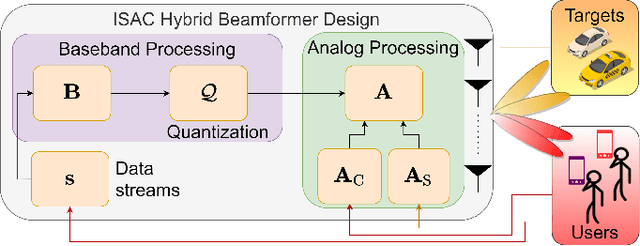
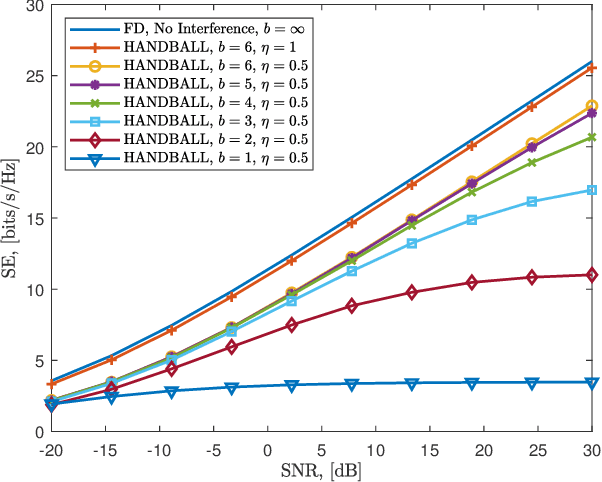
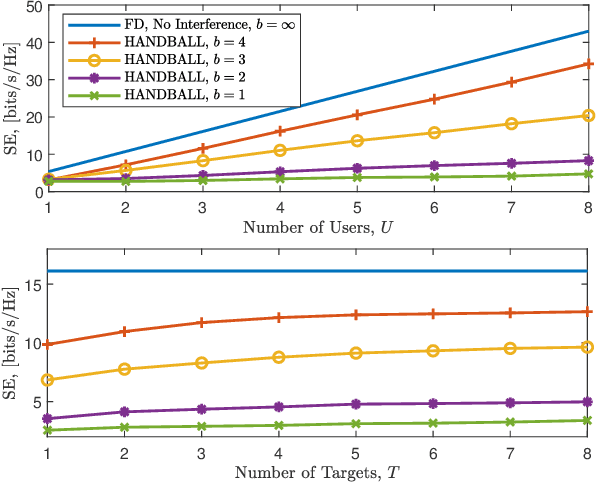
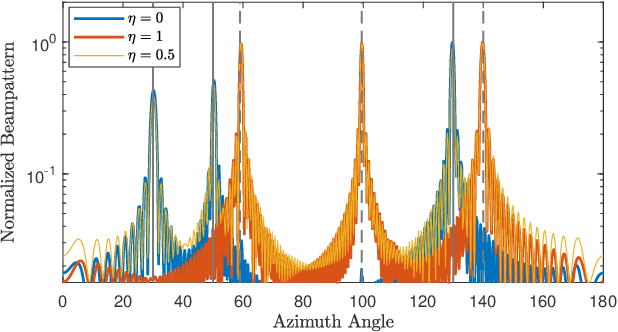
Abstract:Integrated sensing and communications (ISAC) has emerged as a means to efficiently utilize spectrum and thereby save cost and power. At the higher end of the spectrum, ISAC systems operate at wideband using large antenna arrays to meet the stringent demands for high-resolution sensing and enhanced communications capacity. On the other hand, the overall design should satisfy energy-efficiency and hardware constraints such as operating on low resolution components for a practical scenario. Therefore, this paper presents the design of Hybrid ANalog and Digital BeAmformers with Low resoLution (HANDBALL) digital-to-analog converters (DACs). We introduce a greedy-search-based approach to design the analog beamformers for multi-user multi-target ISAC scenario. Then, the quantization distortion is taken into account in order to design the baseband beamformer with low resolution DACs. We evaluated performance of the proposed HANDBALL technique in terms of both spectral efficiency and sensing beampattern, providing a satisfactory sensing and communication performance for both one-bit and few-bit designs.
Near-Field Signal Processing: Unleashing the Power of Proximity
Aug 21, 2024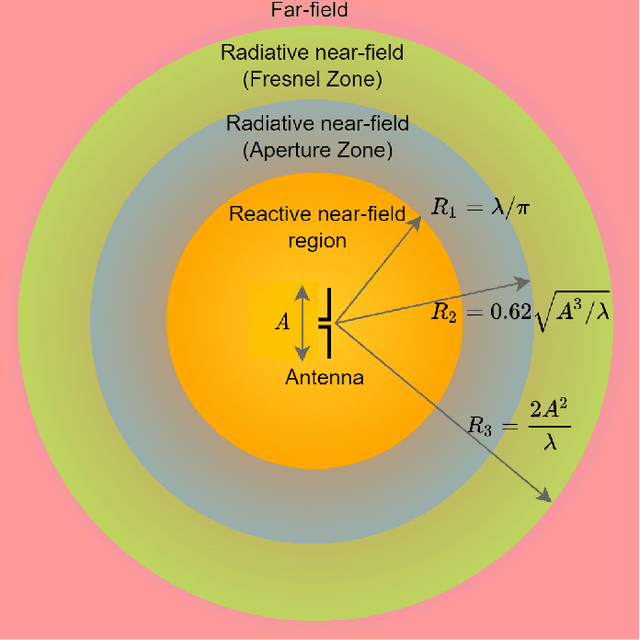
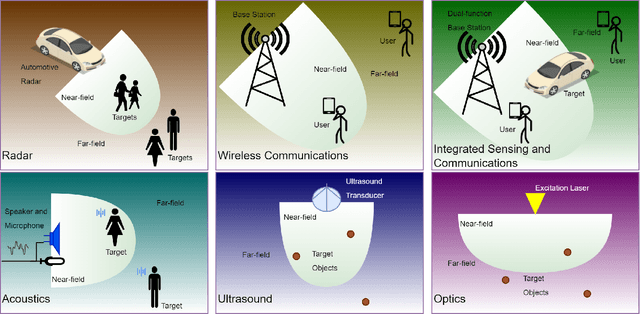
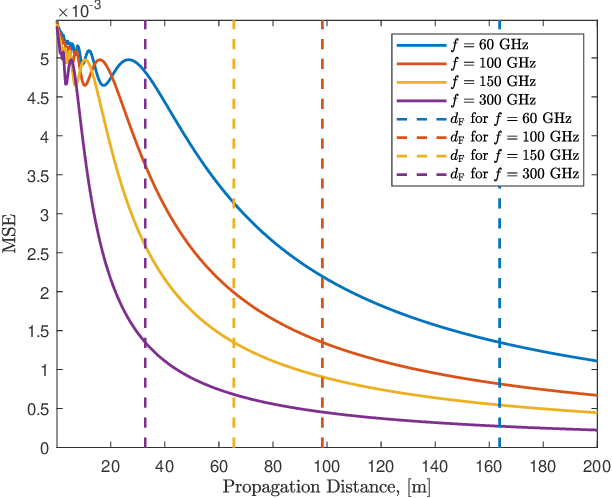
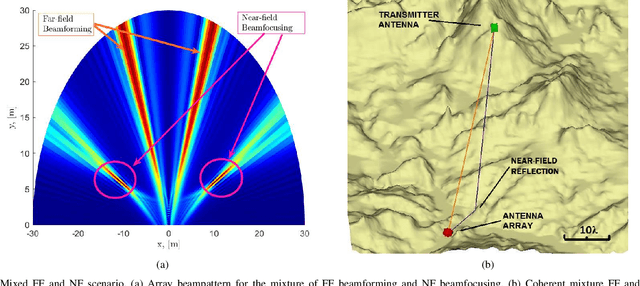
Abstract:After nearly a century of specialized applications in optics, remote sensing, and acoustics, the near-field (NF) electromagnetic propagation zone is experiencing a resurgence in research interest. This renewed attention is fueled by the emergence of promising applications in various fields such as wireless communications, holography, medical imaging, and quantum-inspired systems. Signal processing within NF sensing and wireless communications environments entails addressing issues related to extended scatterers, range-dependent beampatterns, spherical wavefronts, mutual coupling effects, and the presence of both reactive and radiative fields. Recent investigations have focused on these aspects in the context of extremely large arrays and wide bandwidths, giving rise to novel challenges in channel estimation, beamforming, beam training, sensing, and localization. While NF optics has a longstanding history, advancements in NF phase retrieval techniques and their applications have lately garnered significant research attention. Similarly, utilizing NF localization with acoustic arrays represents a contemporary extension of established principles in NF acoustic array signal processing. This article aims to provide an overview of state-of-the-art signal processing techniques within the NF domain, offering a comprehensive perspective on recent advances in diverse applications.
The Curse of Beam-Squint in ISAC: Causes, Implications, and Mitigation Strategies
Jun 05, 2024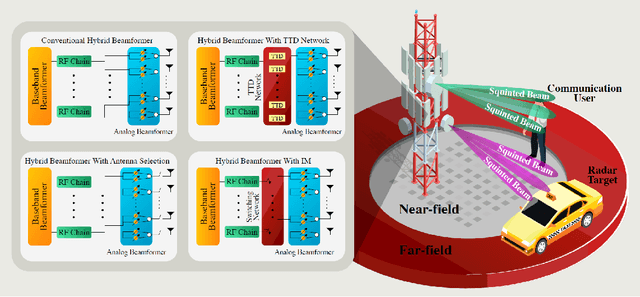
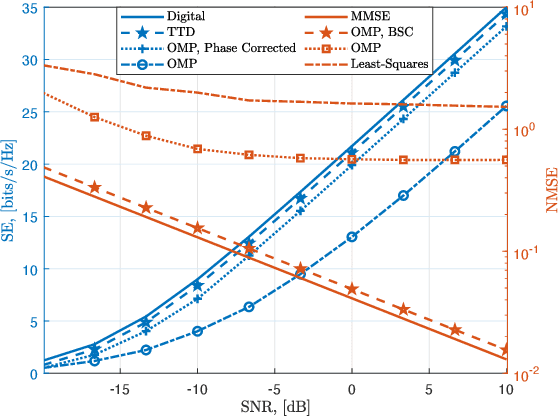
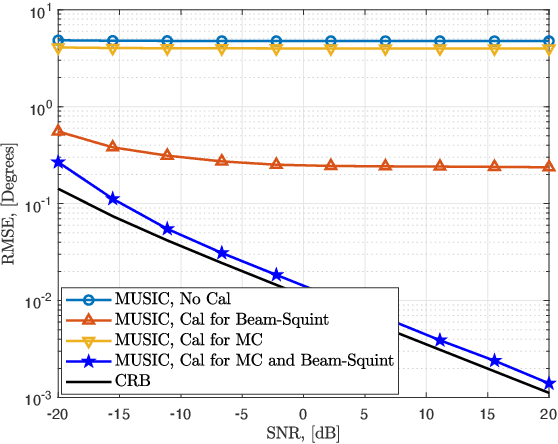
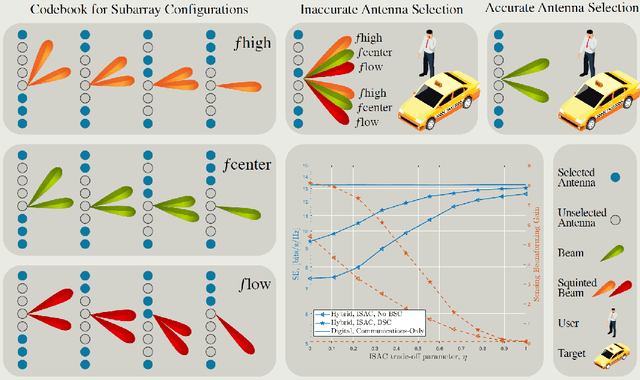
Abstract:Integrated sensing and communications (ISAC) has emerged as a means to efficiently utilize spectrum and thereby save cost and power. At the higher end of the spectrum, ISAC systems operate at wideband using large antenna arrays to meet the stringent demands for high-resolution sensing and enhanced communications capacity. However, the wideband implementation entails beam-squint, that is, deviations in the generated beam directions because of the narrowband assumption in the analog components. This causes significant degradation in the communications capacity, target detection, and parameter estimation. This article presents the design challenges caused by beam-squint and its mitigation in ISAC systems. In this context, we also discuss several ISAC design perspectives including far-/near-field beamforming, channel/direction estimation, sparse array design, and index modulation. There are also several research opportunities in waveform design, beam training, and array processing to adequately address beam-squint in ISAC.
Index Modulation for Integrated Sensing and Communications: A Signal Processing Perspective
Jan 16, 2024



Abstract:A joint design of both sensing and communication can lead to substantial enhancement for both subsystems in terms of size, cost as well as spectrum and hardware efficiency. In the last decade, integrated sensing and communications (ISAC) has emerged as a means to efficiently utilize the spectrum on a single and shared hardware platform. Recent studies focused on developing multi-function approaches to share the spectrum between radar sensing and communications. Index modulation (IM) is one particular approach to incorporate information-bearing communication symbols into the emitted radar waveforms. While IM has been well investigated in communications-only systems, the implementation adoption of IM concept in ISAC has recently attracted researchers to achieve improved energy/spectral efficiency while maintaining satisfactory radar sensing performance. This article focuses on recent studies on IM-ISAC, and presents in detail the analytical background and relevance of the major IM-ISAC applications.
NEAT-MUSIC: Auto-calibration of DOA Estimation for Terahertz-Band Massive MIMO Systems
Nov 07, 2023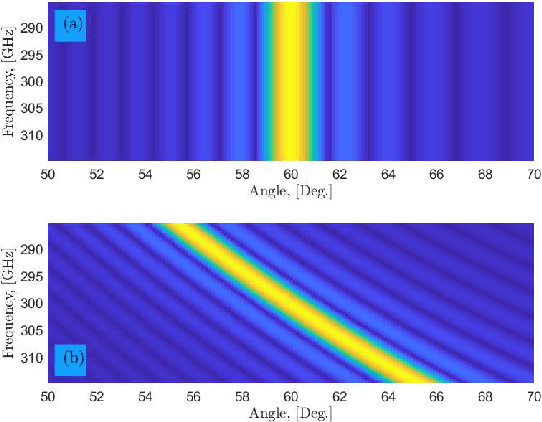
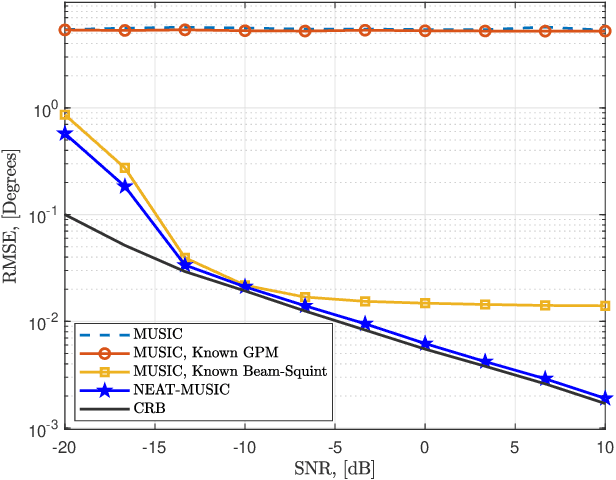
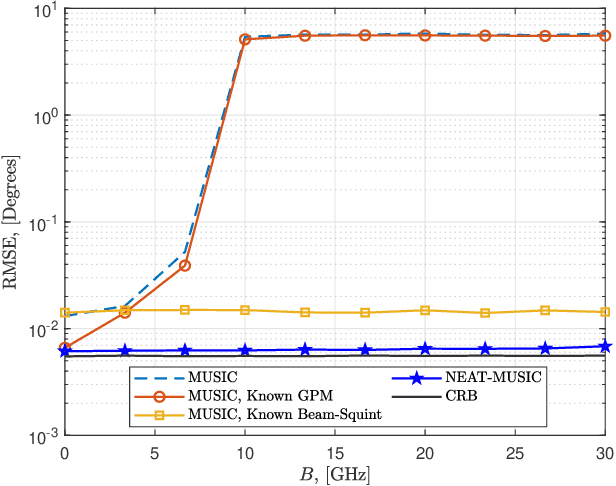

Abstract:Terahertz (THz) band is envisioned for the future sixth generation wireless systems thanks to its abundant bandwidth and very narrow beamwidth. These features are one of the key enabling factors for high resolution sensing with milli-degree level direction-of-arrival (DOA) estimation. Therefore, this paper investigates the DOA estimation problem in THz systems in the presence of two major error sources: 1) gain-phase mismatches, which occur due to the deviations in the radio-frequency circuitry; 2) beam-squint, which is caused because of the deviations in the generated beams at different subcarriers due to ultra-wide bandwidth. An auto-calibration approach, namely NoisE subspAce correcTion technique for MUltiple SIgnal Classification (NEAT-MUSIC), is proposed based on the correction of the noise subspace for accurate DOA estimation in the presence of gain-phase mismatches and beam-squint. To gauge the performance of the proposed approach, the Cramer-Rao bounds are also derived. Numerical results show the effectiveness of the proposed approach.
Spherical Wavefront Near-Field DoA Estimation in THz Automotive Radar
Oct 25, 2023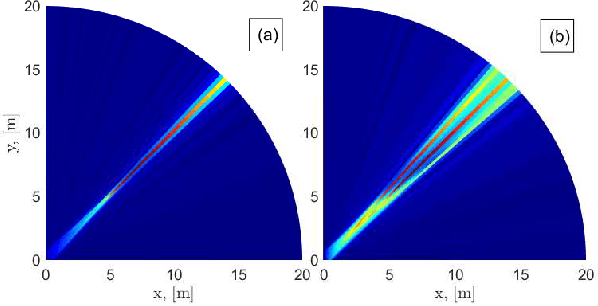
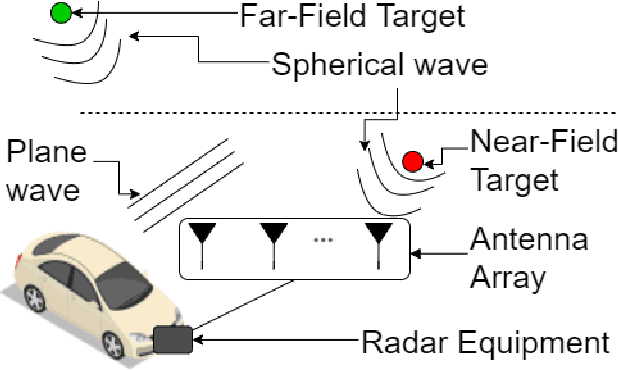
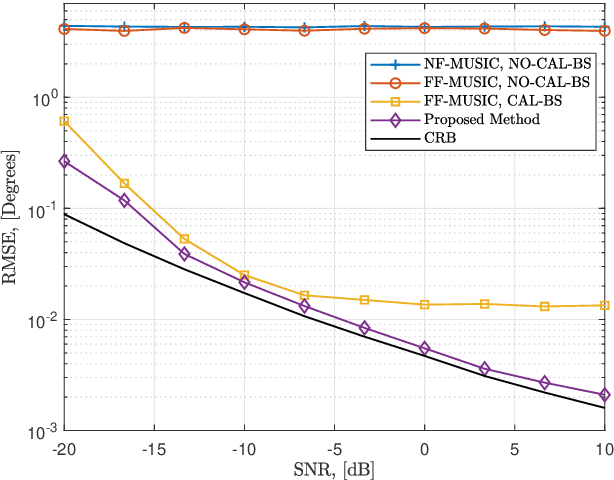
Abstract:Automotive radar at terahertz (THz) band has the potential to provide compact design. The availability of wide bandwidth at THz-band leads to high range resolution. Further, very narrow beamwidth arising from large arrays yields high angular resolution up to milli-degree level direction-of-arrival (DoA) estimation. At THz frequencies and extremely large arrays, the signal wavefront is spherical in the near-field that renders traditional far-field DoA estimation techniques unusable. In this work, we examine near-field DoA estimation for THz automotive radar. We propose an algorithm using multiple signal classification (MUSIC) to estimate target DoAs and ranges while also taking beam-squint in near-field into account. Using an array transformation approach, we compensate for near-field beam-squint in noise subspace computations to construct the beam-squint-free MUSIC spectra. Numerical experiments show the effectiveness of the proposed method to accurately estimate the target parameters.
Near-field Hybrid Beamforming for Terahertz-band Integrated Sensing and Communications
Sep 25, 2023Abstract:Terahertz (THz) band communications and integrated sensing and communications (ISAC) are two main facets of the sixth generation wireless networks. In order to compensate the severe attenuation, the THz wireless systems employ large arrays, wherein the near-field beam-squint severely degrades the beamforming accuracy. Contrary to prior works that examine only either narrowband ISAC beamforming or far-field models, we introduce an alternating optimization technique for hybrid beamforming design in near-field THz-ISAC scenario. We also propose an efficient approach to compensate near-field beam-squint via baseband beamformers. Via numerical simulations, we show that the proposed approach achieves satisfactory spectral efficiency performance while accurately estimating the near-field beamformers and mitigating the beam-squint without additional hardware components.
Terahertz-Band Direction Finding With Beam-Split and Mutual Coupling Calibration
Sep 07, 2023Abstract:Terahertz (THz) band is currently envisioned as the key building block to achieving the future sixth generation (6G) wireless systems. The ultra-wide bandwidth and very narrow beamwidth of THz systems offer the next order of magnitude in user densities and multi-functional behavior. However, wide bandwidth results in a frequency-dependent beampattern causing the beams generated at different subcarriers split and point to different directions. Furthermore, mutual coupling degrades the system's performance. This paper studies the compensation of both beam-split and mutual coupling for direction-of-arrival (DoA) estimation by modeling the beam-split and mutual coupling as an array imperfection. We propose a subspace-based approach using multiple signal classification with CalibRated for bEAam-split and Mutual coupling (CREAM-MUSIC) algorithm for this purpose. Via numerical simulations, we show the proposed CREAM-MUSIC approach accurately estimates the DoAs in the presence of beam-split and mutual coupling.
Sparse Array Design for Direction Finding using Deep Learning
Aug 08, 2023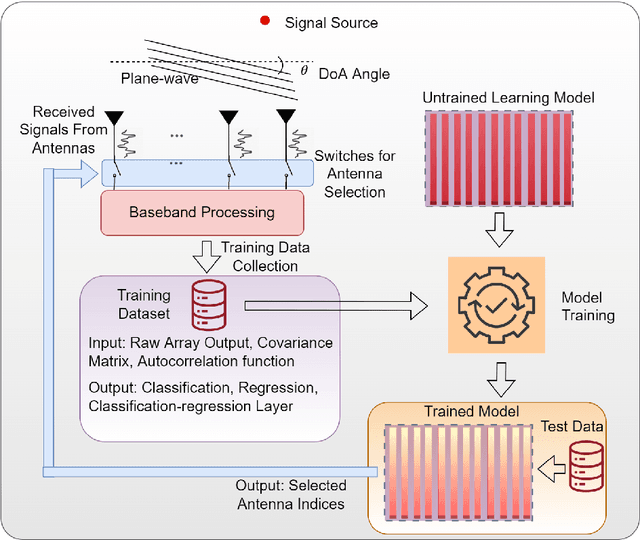

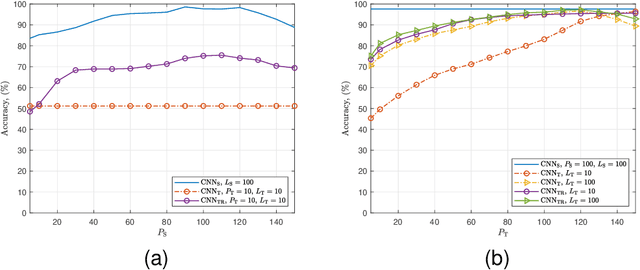
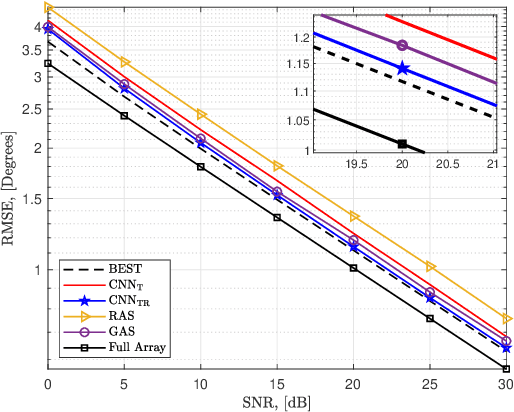
Abstract:In the past few years, deep learning (DL) techniques have been introduced for designing sparse arrays. These methods offer the advantages of feature engineering and low prediction-stage complexity, which is helpful in tackling the combinatorial search inherent to finding a sparse array. In this chapter, we provide a synopsis of several direction finding applications of DL-based sparse arrays. We begin by examining supervised and transfer learning techniques that have applications in selecting sparse arrays for a cognitive radar application. Here, we also discuss the use of meta-heuristic learning algorithms such as simulated annealing for the case of designing two-dimensional sparse arrays. Next, we consider DL-based antenna selection for wireless communications, wherein sparse array problem may also be combined with channel estimation, beamforming, or localization. Finally, we provide an example of deep sparse array technique for integrated sensing and communications (ISAC) application, wherein a trade-off of radar and communications performance makes ISAC sparse array problem very challenging. For each setting, we illustrate the performance of model-based optimization and DL techniques through several numerical experiments. We discuss additional considerations required to ensure robustness of DL-based algorithms against various imperfections in array data.
Antenna Selection With Beam Squint Compensation for Integrated Sensing and Communications
Jul 14, 2023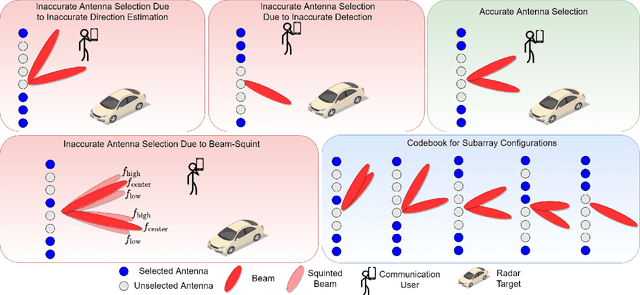
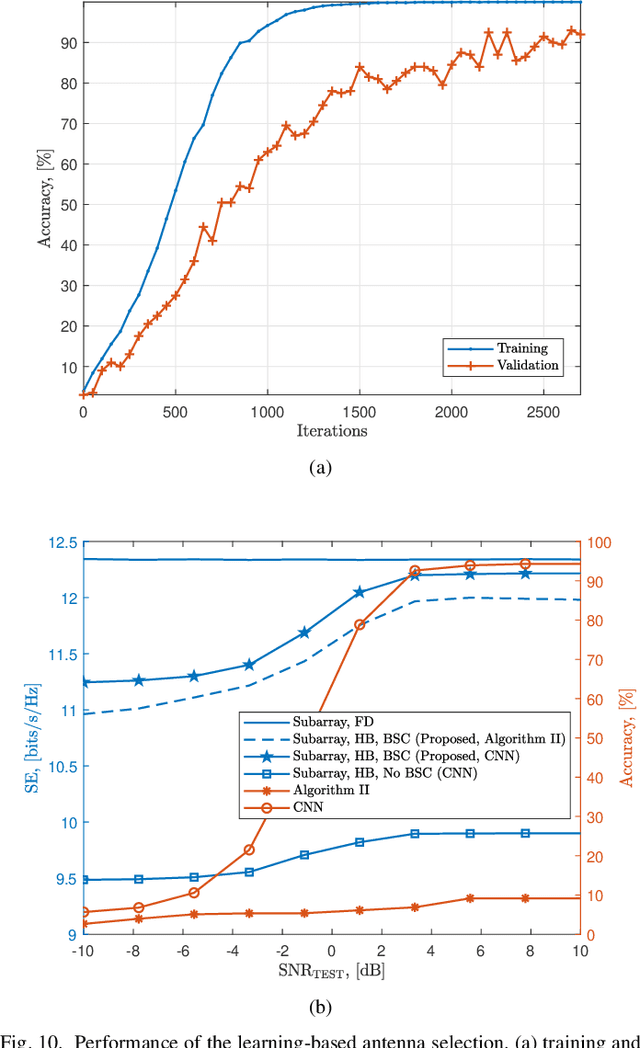
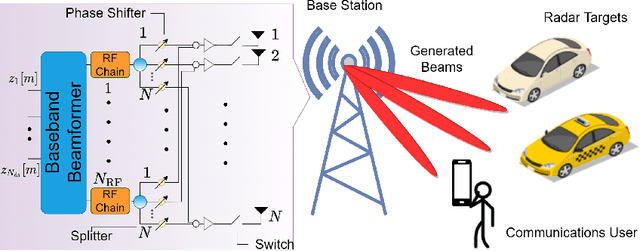

Abstract:Next-generation wireless networks strive for higher communication rates, ultra-low latency, seamless connectivity, and high-resolution sensing capabilities. To meet these demands, terahertz (THz)-band signal processing is envisioned as a key technology offering wide bandwidth and sub-millimeter wavelength. Furthermore, THz integrated sensing and communications (ISAC) paradigm has emerged jointly access spectrum and reduced hardware costs through a unified platform. To address the challenges in THz propagation, THz-ISAC systems employ extremely large antenna arrays to improve the beamforming gain for communications with high data rates and sensing with high resolution. However, the cost and power consumption of implementing fully digital beamformers are prohibitive. While hybrid analog/digital beamforming can be a potential solution, the use of subcarrier-independent analog beamformers leads to the beam-squint phenomenon where different subcarriers observe distinct directions because of adopting the same analog beamformer across all subcarriers. In this paper, we develop a sparse array architecture for THz-ISAC with hybrid beamforming to provide a cost-effective solution. We analyze the antenna selection problem under beam-squint influence and introduce a manifold optimization approach for hybrid beamforming design. To reduce computational and memory costs, we propose novel algorithms leveraging grouped subarrays, quantized performance metrics, and sequential optimization. These approaches yield a significant reduction in the number of possible subarray configurations, which enables us to devise a neural network with classification model to accurately perform antenna selection.
 Add to Chrome
Add to Chrome Add to Firefox
Add to Firefox Add to Edge
Add to Edge